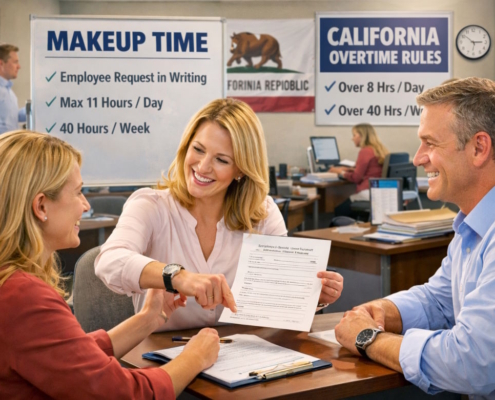What are leadership competencies?
It is important to cultivate a diversified pool of leaders. The likelihood of a company being ranked as the best place to work increases by 3.4 times when training and mentorship efforts are actively implemented to improve leadership competencies. However, only 40% of firms consider their leaders to be of good or exceptional quality. Upskilling managers and leaders is, therefore, one of the main HR trends.
This post will discuss which leadership competencies are most important to zero in on and how to foster them inside your company.
But first, the basics. What are leadership competencies?
These are a person’s technical and soft skills, knowledge, and personal qualities that contribute to their effectiveness as a leader. They are essential to succession planning and contemporary workforce management.
There isn’t a single special set of leadership skills that applies to all businesses and sectors. Various competencies may be needed for even different leadership roles within the same organization. As a result, many businesses use a framework for developing leadership competencies, which is a list of skills they have determined are essential for the success of their leaders and the organization as a whole.
Leadership competencies that align with the organization’s goal give you a competitive edge. It’s also critical to remember that a leader’s worth is determined by the team’s performance as a whole, not just by their own accomplishments.
To effectively train both existing and future leaders and to upskill themselves, HR professionals must have a solid understanding of leadership capabilities.
The significance of leadership competencies
For various reasons, it is essential for you as an HR professional, as well as for your managers and company leaders, to define and build your leadership competencies.
Motivating and inspiring staff members: An excellent leader can energize, excite, and motivate their team to work together towards common objectives, fostering more productivity, creativity, and teamwork.
Successful organizations depend on effective leadership: Motivated workers foster a supportive workplace culture that improves productivity for all. Finding and developing individuals who have the innate ability to lead is therefore crucial. When leadership development is done well, the organization will experience long-term success.
Building strong relationships: Long-term success depends on an individual’s ability to forge strong bonds with colleagues, investors, and consumers. Those who possess great leadership competencies and skills achieve this.
Making educated decisions: Developing leadership competencies enables leaders to take measured risks, evaluate possible outcomes, think through issues and challenges from multiple angles, and make decisions that advance the organization.
Navigating changes: Managing times of uncertainty and upheaval, implementing change management procedures, recognizing the need for change, and preserving continuity and stability for the business all require strong leadership competencies.
Different kinds of leadership competencies
Although leadership competencies differ depending on the role, all leaders, regardless of their sector or organization, need to possess a few fundamental skills. HR may hire, develop, and promote leaders more intelligently by better understanding their ability to recognize key leadership skills.
Three leadership competencies are distinguished by the Society for Human Resource Management (SHRM), specifically:
- Competencies for leading the company, such as decision-making, conflict resolution, and change management.
- Competencies for leading people, such as emotional intelligence, effective coaching, and inclusivity.
- Competencies for leading themselves, such as self-control, bravery, and learning agility.
Other classifications can be made. For instance, Deloitte’s leadership capability model identifies two unique components. The first is what is known as developable capabilities, or the learned elements that are picked up over time and show what a leader is capable of. The second is leadership potential, which refers to natural qualities that are difficult (or harder) to develop, persist over time, and capture a person’s essence.
This article will delve deeper into each of SHRM’s three primary leadership competency categories. It’s crucial to remember that many leadership qualities might fall under more than one category, so the list of competencies provided below is not all-inclusive.
Leadership competencies needed to lead the company
- Social Intelligence (SI)
“Social intelligence” refers to our understanding of different social situations and dynamics and the way we interact with others. It is among the finest indicators of effective leadership, claims Psychology Today.
A leader with great social intelligence in the office can prevent arguments and encourage efficient communication by knowing when to speak and when to listen.
- Solving problems
Recognizing and evaluating issues using one’s expertise is essential for effective leadership. A good leader will try out a few ideas to see which is best, and they will only share it when they know it can succeed.
- Handling conflicts
Managing people with different personalities, views, traditions, and moods in a company will always result in conflict. Because of this, skilled leaders can lessen and handle this sort of conflict, improving performance and strengthening teams. Instead of pushing both parties to compromise or forcing a decision, the art is finding a method to bring together their divergent points of view.
This is an example of a leadership competency that can be used to lead others and the company.
- Making decisions
Decision-making is one of the main leadership competencies because it is at the heart of a leader’s duties. A competent leader knows when to act alone and when to seek advice from peers or team members. Perhaps most importantly, they know when to step aside and let others make the ultimate choice.
- Creating and sharing a vision
As well as inspiring and influencing others to act on their vision, strong leaders can forge an inspiring shared vision with other executives and their teams to bring about change in the company.
One of the primary factors influencing a person’s wish to join (and stay) your business is its future trajectory. This is also why your company would draw in business partners and clients. Thus, leaders need to be able to communicate a vision that inspires widespread support.
- Managing change
Organizations are always changing, particularly when they grow. Occasionally, these modifications will be minor, like a new system for leaving and entering the office. More significant changes will happen over time, including the digitization and automation of procedures or a more distant or hybrid working style.
A competent leader needs to be able to encourage and help their team during these shifts and prepare them for them. Strong communication skills and the ability to minimize complexity are required for this.
- Originality
Every field’s top performers are always imaginative and creative. The result is services and goods that continually raise the value of their offerings or the client experience.
To do this, a company requires creative leaders who embrace mistakes and failure as a crucial step to success. They should also foster a cooperative work atmosphere and enable (and push) their employees to be creative.
- The entrepreneurial spirit
Entrepreneurial in nature, effective leaders are always looking for ways to create new possibilities, improve processes, and provide better goods and services to their customers. Thanks to their leadership competencies, they can take calculated risks to reach and outperform company objectives.
Leadership competencies for managing other people
- Social Abilities
Soft skills and people skills are other names for interpersonal abilities. This entails being respectful and considerate of others, adapting to what others may need in various situations, actively listening, nonverbal communication, providing and accepting feedback, teamwork, and problem-solving abilities.
- Emotional Intelligence (EI)
The basic idea of emotional intelligence is our ability to understand the feelings and circumstances of other people. It also involves our ability to recognize and control our own feelings.
There are various components to emotional intelligence.
- Self-regulation: The ability to control our own feelings.
- Self-awareness: Being aware of your advantages and disadvantages.
- Empathy: Empathetic and compassionate people tend to get along with others more easily.
- Motivation: Individuals with high levels of emotional intelligence are typically also highly driven.
- Social skills: People with emotional intelligence have social skills that show sincere regard and concern for others.
According to Jamie Olson, VP of People & Culture at Continu, leaders with high emotional intelligence are typically good at addressing conflict, managing stress, and empathizing with others—all of which help create a positive team culture.
- The ability to coach and reliability
One essential leadership skill is the ability to coach colleagues and team members effectively. This includes understanding when to (kindly) push someone outside their comfort zone, providing helpful criticism when needed, and assisting others in discovering their vision.
Giving instructions to others makes it easy to lead since it spares them from having to think for themselves. According to Susie Tomenchok, an executive coach and facilitator at the Syndeo Institute at the Cable Center, coaching helps people grow in meaningful ways, fosters trust, and maximizes their abilities to complete tasks.
Trust is essential for a coaching relationship to be successful. Leaders must also build and sustain excellent relationships with the individuals under their supervision and with clients and customers.
Professor Frances Frei of Harvard Business School outlines the three elements of trust as follows:
- Authenticity: Being genuine means always staying loyal to who you are.
- Stability in reasoning: Making sure that your reasoning is sound and that you can explain it.
- Empathy: The ability to actively listen to others, feel their pain, and adopt their perspective on situations.
- Inclusivity
Effective leaders are able to establish a welcoming atmosphere at work. They guarantee that each worker receives the same resources and opportunities, is respected and treated fairly, and can contribute and flourish. Stated differently, inclusive leaders are good leaders.
Inclusive leaders, per Harvard Business Review research, share the following characteristics:
- A clear dedication to diversity, questioning the status quo, taking responsibility for others, and prioritizing D&I on a personal level.
- Humility: They own their faults, are humble about their talents, and make room for others to contribute.
- Awareness of bias: They make a concerted effort to uphold a meritocracy and demonstrate awareness of both their own blind spots and systemic shortcomings.
- Curiosity about people: They listen with an open mind, show a keen curiosity about others, and try to empathize with those around them.
- Cultural intelligence: They are aware of the customs and traditions of others and adjust accordingly.
- Successful teamwork involves empowering others, recognizing psychological safety and variety of thought, and emphasizing cohesiveness within the team.
- Managing personnel
Effective people management is essential for leading others, particularly for HR leaders. This requires managing staff every day and supervising their training, development, and motivation, depending on the leadership level.
Effective leaders impart to their teams the five Cs of people management—clarity, courage, consistency, context, and commitment.
Possessing the leadership competencies to guide oneself
- Agility (Learning)
The pandemic made clear how crucial it is to have the flexibility to adjust to changing conditions quickly. This holds true for all employees, but it is especially true for leaders, who have a responsibility to help and mentor people and run the organization through these occasionally difficult times. Because of this, agile leaders welcome change rather than fear it.
The capacity to react swiftly, either internally or externally, to changes in the business environment is known as agility. According to leadership development and career counselor Diane Gallo, agility involves willingness to change, openness to reviewing plans of action on a regular basis, and a flexible mindset in the workplace.
Learning agility, or the capacity to continuously learn, unlearn, and relearn, is another quality of good leaders. They understand the significance of continuously evolving, expanding, and using fresh approaches to address the progressively intricate issues they encounter within their companies.
- Expertise and industry knowledge
More people are changing companies, industries, and positions than 10 years ago. Technological advancements, in particular, are happening so quickly that keeping up with them on top of other leadership duties may seem unachievable.
Effective leaders are conscious of the need to stay current on emerging trends and maintain a certain level of expertise in the industry and business they are leading.
- Self-management
Among the many aspects of self-management are emotions, workload, and scheduling. Being able to control oneself is a prerequisite for being a successful leader and managing others.
Although everyone does this differently, mastering this ability requires being well-organized, proactive, and able to prioritize tasks.
- Bravery
Leaders have to make decisions all the time. Some will be difficult and involve taking calculated risks, which takes guts.
Being courageous also entails sticking up for your principles and company, even if it means defending them publicly.
- Conduct related to organizational citizenship
All the good and constructive activities and behaviors that employees engage in outside their official job description are collectively called organizational citizenship behavior, or OCB. It is everything that workers voluntarily do to help their coworkers and advance the interests of the company as a whole.
The following are the top five types of OCB:
- Altruism is the act of a worker lending a hand to another worker without anticipating compensation.
- Courtesy is the act of acting with consideration and politeness toward others. Saying good morning, checking in with coworkers to find out how their vacation was, how their children are doing, how the task they’re working on is doing, etc. are a few instances of being courteous at work.
- Sportsmanship: The ability to handle unplanned events and refrain from acting inappropriately in response.
- Conscientiousness: Workers plan ahead before taking a vacation to ensure that their colleagues won’t be drowning in work while they are away. They also arrive on time and meet deadlines.
- Civic virtue is the act of an employee supporting their employer outside of their official position. Employees might exhibit civic virtue by participating in business-related activities like fundraisers or teaming up with colleagues to run a marathon for a charitable cause.
Leaders need to inspire others by leading by example. One way to achieve this is by modeling the OCB they like to see in others.
How to cultivate your leadership competencies
Now that you are fully aware of the most important leadership skills, let’s discuss how you can begin fostering these qualities in your staff and yourself as a (future) HR leader.
Below is a brief outline of what you may accomplish, but remember that developing leadership qualities is not easy and uncomplicated.
Make a leadership development evaluation
A leadership competencies assessment or self-evaluation can help find an employee’s strengths and weaknesses and important areas for improvement. Since every individual will experience this differently, it’s critical to customize leadership development programs rather than adopt a general approach.
The assessment should be grounded in your leadership competency model to ensure that the traits being evaluated are those that your business needs.
Determine the best strategies for developing leadership competencies
- Coaching and mentoring
A great technique to enhance leadership abilities via theoretical and practical learning is pairing aspiring leaders with seasoned ones. People who have spent significant time working for a firm can provide valuable insights into the company, its product offering, and its target client and market. Peer mentoring can also improve your program for developing leaders.
Additionally, coaching can be beneficial, particularly in developing one’s skills in nonverbal communication, active listening, and providing and accepting constructive criticism. With the rapid growth of AI-based coaching, HR has more opportunities to create employee leadership coaching programs.
- Official instruction
Formal leadership training is a common option that might include seminars and useful guidance. Indeed, it is projected that the market for corporate leadership training will expand by $26.7 billion by 2024.
Formal training will be a more effective means of delivering certain leadership competencies, such as change management, conflict resolution, and people management.
- Workshops and focus groups
Focus groups and group seminars are additional methods for fostering leadership qualities. In a group setting, people can acquire more real-world experience and possibly pick up new skills that they might not discover while working one-on-one with a mentor.
- Independent education
With the correct resources, employees can acquire leadership skills at their own speed and at their own time. Some people might be unable to meet with an instructor after hours because they are too busy or have family obligations.
- Shadowing a job
In succession planning, job shadowing is a popular practice when one employee works under another to eventually take over their position. However, job shadowing can also be useful in providing an employee with a better understanding of what it takes to be an effective leader at a company and what a normal day might entail.
- Professional accreditations and certifications
Many in-person and virtual certifications and accreditations are available to help individuals enhance their leadership skills. As we’ve already discussed, online programs often let students learn at their own speed, making it possible for them to fit it around their current obligations.
Make plans for leadership development
Make plans for employees’ leadership development to assist them in growing as leaders and prepare them for management positions within your company. This will usually be a long-term strategy that is organized, customized, and suited to the company’s and the employee’s requirements. It will include a list of learning objectives and additional tasks that the employee must perform to meet their targets.
Additionally, you can design focused HR leadership development programs to transform HR workers into leaders equipped to handle an uncertain workplace environment in the future. This program will emphasize the development of key HR abilities and leadership skills through a variety of training and evaluations.
According to Dr. Wallace, every competency is backed up by several behaviors. Emphasize the specific, useful elements. Giving feedback, for instance, requires paying attention to the team member, developing the confidence to deliver a difficult message, controlling one’s emotions, and understanding when to wait and when to teach.
To sum up
Different industries, businesses, and their positions and functions require different leadership competencies. To hire, develop, and promote leaders more effectively, HR must thoroughly understand the distinct leadership competencies required for success in each function.
It’s also important that staff members feel their company values their growth and offers the framework required to help them fulfill their responsibilities and progress within the company.































